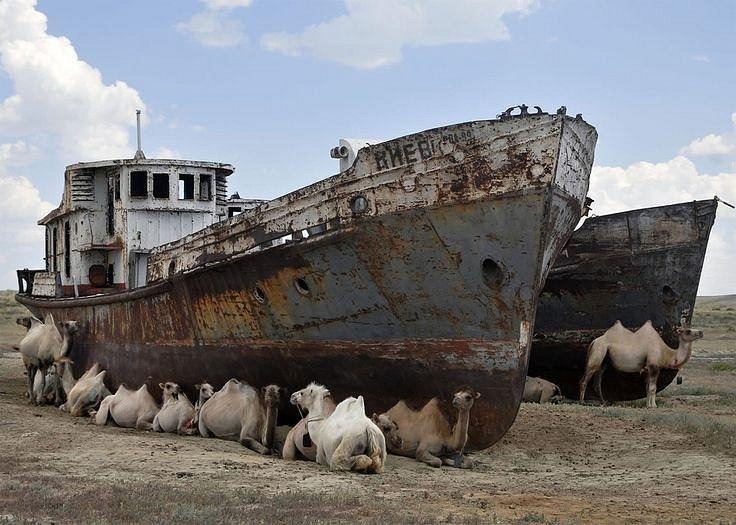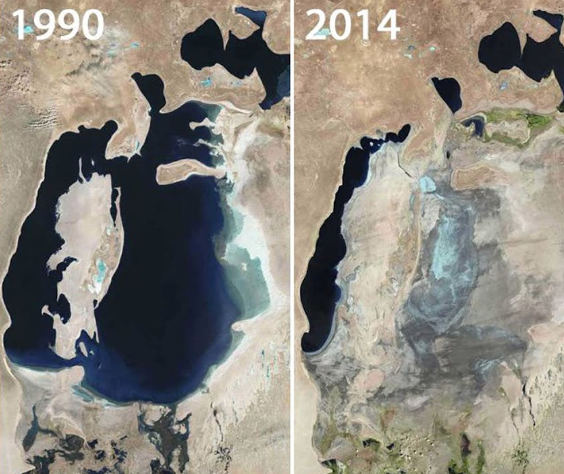← Back
How The Cotton Industry Killed Aral Sea

Did you know…?
1.76 million tonnes of raw material enters the British clothing industry every year with a third of it becoming waste (Valuing our Clothes report, 2012). The Waste and Resources Action Programme reported £140m worth of clothes enter the landfill each year. Most of these clothes include an element of synthetic yarn. The synthetic industry is produced using intensive carbon processes relying on the petrochemical industry and fossil fuel extraction. These fibres are not biodegradable and are a major contributing factor to plastic micro-fibres shedding which is polluting our water and air. Therefore, natural fibres offer a biodegradable capability not leaving any textiles left in landfills to decompose over hundreds of years.
One of the most devastating disasters which has been caused by the fashion industry was the disappearance of the Aral Sea found in Central Asia. It was once known to be the world’s fourth largest lake. The water had been used intensively to irrigate fields needed for the Uzbek cotton industry. As water becomes more scarce and polluted, we need to see more natural materials which do consume less resources. Hemp uses one third of the water that cotton does and as a bioremediation crop, it will actually put nutrients back into the ground. This type of crop will offer a high fibre content per acre without the need of pesticides and herbicides which has also degraded the land. Our products are a worthy carbon capture. Through the carbon cycle, we see this atom processed through photosynthesis which in turn will produce the biological structure of the plant; proteins, fats and carbohydrates. So, there we have it.
We see products that do not compromise fashion for sustainability. Materials that use strong fibrous raw material promotes longevity whilst offering many solutions for some of the most polluting issues we face today. In turn this will largely reduce greenhouse gases around the world if we can utilise this plant with ecological processes. .

Post a comment